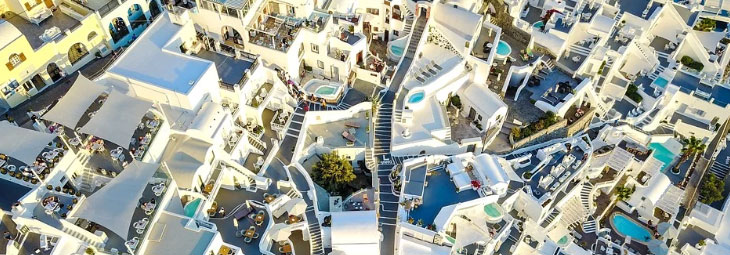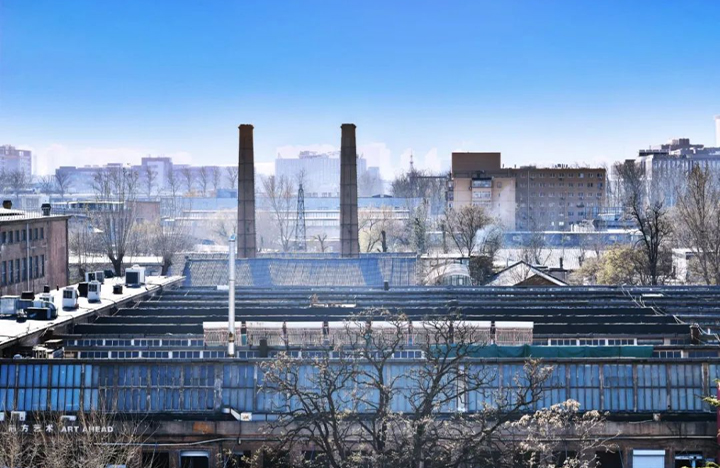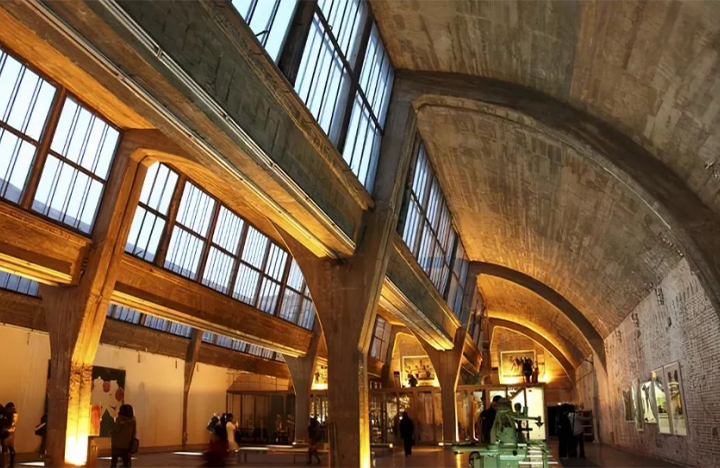



Source: 798 Art District
On October 12, according to the industry standard of "Specification and Evaluation of National Industrial Tourism Demonstration Base", recommended by the relevant provincial (autonomous region, municipal) cultural and tourism administrative departments, the Ministry of Culture and Tourism organized expert review and publicity according to the procedures, and determined that the Beijing 798 Art District was a national industrial tourism demonstration base.
Today, with the acceleration of urban renewal, more and more abandoned industrial parks choose to transform into cultural and creative parks and art parks. Many places make full use of abandoned industrial plants and warehouses, combined with the local historical and cultural background, to create art spaces with unique charm and cultural connotations. Their existence not only preserves the historical and cultural value of the industrial heritage, but also provides a space for artists to create and exhibit, and promotes the development of the local cultural industry. In this context, as a classic case created by the times, the development process and construction strategy of 798 Art District can bring us many useful inspirations.
1、The Beijing 798 Art District's Past and Present.
(1)The history of the 798 Art District.
The place where the 798 Art District in Beijing is located is the "Beijing North China Radio United Equipment Factory" built with the assistance of the former Democratic Republic of Germany, which is designed and constructed by an architectural agency in Dessau, Germany, and is a typical Bauhaus style building, also known as the 718 United Factory. In April 1964, the superior supervisory unit revoked the establishment of the 718 joint factory, and in December 2000, it was integrated and reorganized into Beijing Qixing Huadian Technology Group Co., Ltd. Later, in order to cooperate with the planning and transformation of the Dashanzi area, Seven Star Group moved out part of the industry, and in order to effectively use the vacant factory buildings, Seven Star Group rented out this part of the idle factory buildings.
Due to the orderly planning, convenient transportation, unique Bauhaus architecture and other advantages of the park, it has attracted many art institutions and artists to rent idle factories and renovate them, gradually forming a multicultural space integrating galleries, art studios, cultural companies and fashion shops. Its development process can be divided into the following stages:
①Incubation period (1995-2003): During this period, Sui Jianguo, a professor of sculpture at the Central Academy of Fine Arts, rented an idle warehouse in the Dashanzi area at a very low price, becoming one of the earliest artists in the 798 Art District. Subsequently, the arrival of well-known galleries and well-known artists in Japan brought more attention to the 798 Art District. The strong working relationship between the artists and the owners has made the 798 Art District a multicultural space with galleries, art studios, cultural companies and fashion shops.
②Controversy (2004-2006): During this period, artists held a number of events, which sparked controversy over the demolition and planning of the park. However, through the joint efforts of artists, scholars, and the government, as well as the government's positive attitude and policy support, the 798 Art District has been preserved and identified as one of the cultural and creative industry clusters in Beijing, successfully transforming into a unique art park that integrates industrial heritage and contemporary art.
③Normative guidance period (2007-2010): In this stage, the 798 Art District gradually changed from a non-governmental nature to a quasi-official nature. Especially under the influence of the 2008 Olympic Games, the Art District has become a special tourist reception area for the Olympic Games. The Government began to fund the improvement of municipal facilities and the cultural environment, and a number of funds were established to support the development of young artists. During this period, the government, enterprises and art institutions began to participate together, forming a development model of "government guidance, enterprise leadership, and participation of art institutions".
④Compound and diversified development period (2011 to present): This stage is a period when the popularity of 798 Art District has been significantly improved. As popularity has risen, rental prices have risen in the arts district, causing more artists to move out. More commercial formats such as galleries, art cafes, bars, and creative shops have emerged in the art district, forming the characteristics of an art tourism district. At the same time, this stage was also accompanied by a seminar held by the Management Committee of the Art District and Seven Star Group to discuss the future development direction.
(2) The development status of the 798 Art District.
Today, the 798 Art District is deeply loved by tourists for its historical buildings with industrial design style and modern art, with a strong cultural atmosphere and a prosperous cultural and tourism industry. With the advantages of the tall LOFT space, the unique architectural style and the proximity to the Central Academy of Fine Arts, 798 has attracted a large number of artists to settle in, giving birth to a unique art ecology, and 35 international cultural and art institutions from 19 countries and regions have taken root here, and is known as one of the top ten art parks in the world. According to statistics, the 798 Art District receives more than 10 million tourists annually, and has been awarded many honorary titles such as the qualification for the establishment of a national cultural industry demonstration park, the first batch of national night cultural tourism consumption clusters, and the Beijing cultural industry demonstration park.
Covering an area of 300,000 square meters, the 798 Art District still retains the largest Bauhaus complex in Asia built by East Germany at the time of its construction. In 2007, the 798 Modern Buildings Complex was included in the "List of Outstanding Modern and Modern Buildings in Beijing (First Batch)". It is not only a relic and witness of the historical development of New China's industry, but also the innovation and development of historical style and cutting-edge art.
According to statistics, the cultural and artistic formats of the 798 Art District account for 78.65%, covering internationally renowned art institutions from 19 countries and regions around the world, as well as nearly 100 artist studios, holding more than 4,000 cultural and artistic activities every year, and successively holding exhibitions of authentic works by world-renowned artists such as Picasso, Andy Warhol, Morandi, etc., as well as art exhibitions and exhibitions to promote the excellent traditional Chinese culture.
As Beijing's cultural business card and an important window for cultural and artistic exchanges between China and foreign countries, 798 Art District attracts a large number of domestic and international visitors every year, receiving an average of 10 million Chinese and foreign delegations and tourists every year, and the proportion of overseas tourists is as high as 30%.

The Aerial view of the 798 Art District Source: the 798 Art District

The interior space of the factory Source: the 798 Art District
Source: <https://mp.weixin.qq.com/s/w_MVZi5a6jDVwvVVivDFig>
Edited and Translated by Guan Tao